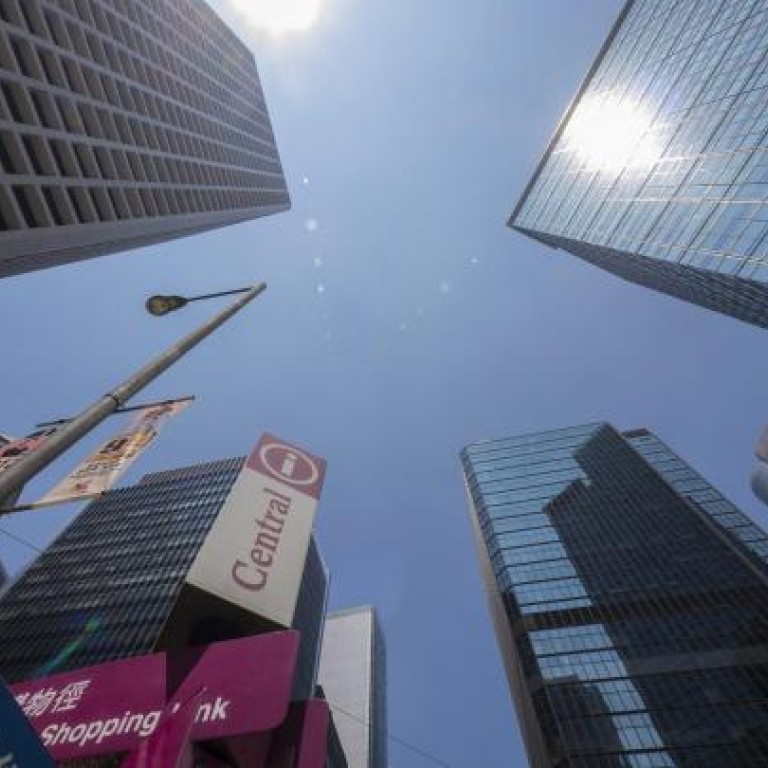
Energy efficiency law for buildings will have big impact
New ordinance will affect every company that is a full or part owner of space in a commercial building, so study it well
Decision-makers for any company that owns or leases commercial property in Hong Kong would be well advised to familiarise themselves with the Buildings Energy Efficiency Ordinance which came into effect last month.
The provisions of the ordinance may save owners or tenants millions of dollars, cost millions of dollars, or even result in fines of millions of dollars, not to mention the possibility of prison terms for extreme transgressions. So it will pay to study the law and make the right decisions.
The law has three sections. One section covers new buildings; another renovations; and the third sets out a requirement for certain buildings to undergo an energy audit every 10 years.
The law is a minimum standard. It specifies the minimum level that must be met, below which one is breaking the law. It is not in any way a high standard, a best practice, or a mark of excellence.
For new buildings, the minimum standard imposed by the law governs just four building installations - the air conditioning system, the electrical system, lighting, and lifts and escalators.
For existing buildings (bearing in mind that new buildings become existing buildings the day they receive their occupation permit) the minimum standard imposed by the law governs those same four categories. It specifies that renovations (the ordinance uses the term "major retrofits") involving the four installations, or of floor space greater than 500 square metres (about 5,400 square feet) need to meet the codes in force at that time.
Expect the codes to become more stringent over time. The pace and degree of that tightening is likely to be affected both by technological advances and the sentiment of Hong Kong developers and the community at large, but the direction is clear.
The minimum standard for the energy audits prescribed by the law is particularly low. A compliant energy audit simply needs to include six specified elements. Senior executives will be more informed by noting that no recommendation from these audits needs to be implemented, but that one metric required to be included in the audit report, the so-called energy utilisation index, must be prominently displayed in the lobby of the building in question.
It will not take too much imagination to foresee that green groups, property advisers, and energy equipment vendors will soon be making the rounds of audited buildings (about 4,000 in the first year alone) and making use of the information they find on display.
The law was first mooted many years ago, and passed through the legislative process in 2010. However, a generous grace period led to this late start.
In fact Hong Kong's building energy code is late in more ways than one. Many major cities around the world have had energy codes in place for 20 years or more.
The new minimum standard against which buildings and tenancies can be designed, equipped, and renovated, will be seen in a different light by decision-makers with different mindsets. Some corporate decision-makers will certainly see this new set of laws as a welcome stepping stone, a playing-field leveller, and in many other ways a boon to their sustainability agendas. For example, it will lower the marginal cost of adopting even more aggressive energy efficiency measures, since the lower levels of energy efficiency will be law, not choice.
Others may see the new law as simply bothersome, and some will assuredly try to find ways to sail as close to minimum compliance as they can.
All decision-makers, however, will need to make their decisions from a position of knowledge. Senior corporate executives need to know what they need to know, in both senses of that phrase.
Every company operating in Hong Kong that rents office or retail space totalling more than 500 square metres is likely to be governed by this new law sooner or later. Every company which is a full or part-owner of space in a commercial building (or a mixed-use building), will be impacted by this new law, probably before 2013 is out.
And every company that develops new buildings needs to know every tiny detail of this new law by yesterday.
Senior corporate executives do not need to know how to avoid the "on-the-spot" fines of up to HK$1 million, nor how many millimetres of insulation are required on a pipe buried in the bowels of some plant room somewhere.
They will have staff to manage and oversee these details. And they will have lawyers to advise how contractual terms will need to be changed to allocate legal responsibility under the ordinance.
But they will need to make astute decisions about strategic issues if they want to extract the most value from making good choices, and avoid the greatest losses from making bad choices, in this newest aspect of Hong Kong's real estate business.

